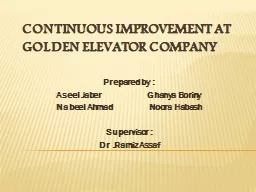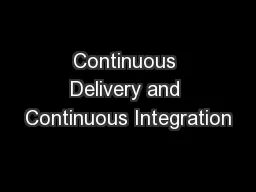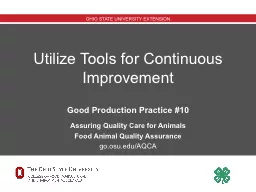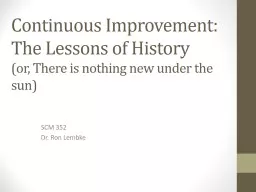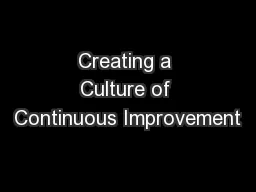PPT-Continuous Improvement at Golden Elevator Company
Author : danika-pritchard | Published Date : 2019-12-17
Continuous Improvement at Golden Elevator Company Prepared by Aseel Jaber Ghanya Boriny Nabeel Ahmad Noora Habash Supervisor Dr Ramiz Assaf Agenda Introduction
Presentation Embed Code
Download Presentation
Download Presentation The PPT/PDF document "Continuous Improvement at Golden Elevato..." is the property of its rightful owner. Permission is granted to download and print the materials on this website for personal, non-commercial use only, and to display it on your personal computer provided you do not modify the materials and that you retain all copyright notices contained in the materials. By downloading content from our website, you accept the terms of this agreement.
Continuous Improvement at Golden Elevator Company: Transcript
Download Rules Of Document
"Continuous Improvement at Golden Elevator Company"The content belongs to its owner. You may download and print it for personal use, without modification, and keep all copyright notices. By downloading, you agree to these terms.
Related Documents

